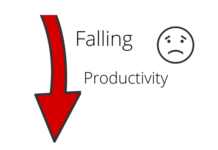Feedback-based performance management system is not very new to the world. It is a process where the supervisors or the managers evaluate the performance of their subordinates and accordingly provide feedback to the employees— monthly, quarterly or annually. Many companies have now done away with the rating system to measure the productivity of their employees. Trying to keep pace with the changing world, e-Emphasys Technologies, a global IT solutions company, has finally decided to move on and adopt the feedback-based performance management system.
As per Abhishek Jha, global human resource director, e-Emphasys Technologies, the Company had a very traditional annual-based performance management system earlier.
This is a global initiative at e-Emphasys Technologies. The whole feedback-based performance management involves creating organisational goals, cascading those goals down into business and finally down to individual goals.
e-Emphasys Technologies has decided to bring in change right from the top. The new performance management process involves setting up organisational goals at the C-suite level. This is how it works. The C-suite members formulate their organisational goals for the year and then communicate the same to the level of executives immediately below them. These executives, in turn, make their own goals on the basis of the goals formulated by the C-suite members. These goals are then further communicated to the middle-level management. This way, the cycle moves on —the goals are formulated at the top and cascaded down to the lowest level of the pyramid. This method ensures that everybody knows what they have to do and what is expected from them.
It also allows the managers to build and create their targets and let the subordinates know what they have to achieve. After the employees are evaluated, the managers give them a feedback on the basis of their performance and also explain how they can improve in certain areas.
“The purpose of giving a feedback is not to scrutinise or penalise somebody for not performing well. It is more about collaboratively coming together to discuss the areas where employees are lagging and how we can improve that,” shares Jha.
Feedback will be given to the employees on a quarterly basis instead of annual. This way, employees will have scope to improve and catch up to their goals and targets.
“There is no point of giving a feedback after a year. It does not allow the employees to improve and achieve goals. Quarterly feedbacks will work as feed forwards for the employees,” says Jha.
Through this cascading of organisational goals at every level, the employees know on which basis they are being evaluated, because everybody is aware of their goals and targets.
As the system is pretty much new to the organisation, the managers are given training in the art of giving feedback. Workshops are conducted, which include assessments, role-plays, experiential learning and classroom learning. The training of managers is not a one-day affair, but a continuous process.
The new performance-management programme is known as e-PEP (Performance Excellence Programme). The pilot programme was started in March. As the new system was expected to bring about a huge change in the organisation, a lot of roadshows and socialising activities were conducted to ensure that every employee was clear about the transformations in the organisation. One-on-one interactions, team meetings and surveys were also conducted to understand the reaction of the employees to this massive change in the organisation.
Companies started to move to a feedback-based performance management system as early as 2016. Not one to be left behind, e-Emphasys Technologies has also finally caught up with the industry.
Value our content... contribute towards our growth. Even a small contribution a month would be of great help for us.
Since eight years, we have been serving the industry through daily news and stories. Our content is free for all and we plan to keep it that way.
Support HRKatha. Pay Here (All it takes is a minute)




































